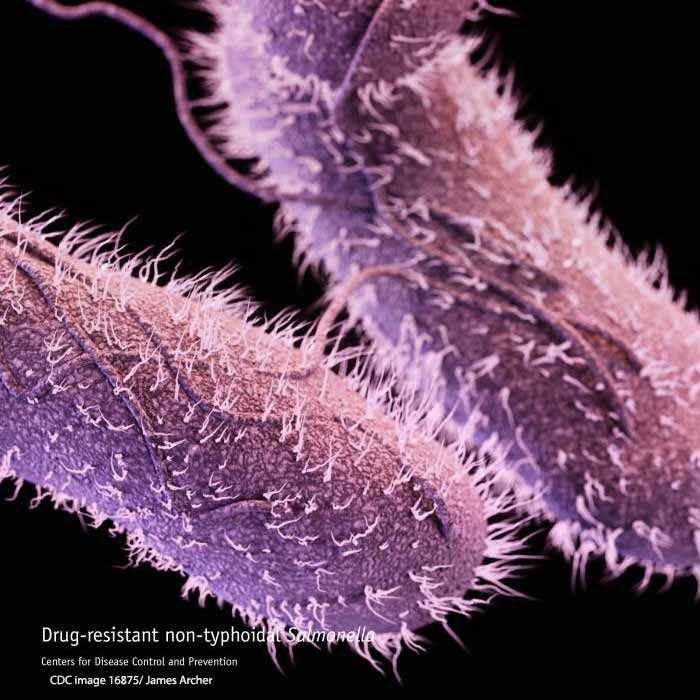To find outbreaks, health officials monitor PulseNet, a national laboratory network that stores DNA fingerprinting data from people sickened by foodborne pathogens like E. coli, Listeria and Salmonella. When 2 or more unrelated people have been sickened by pathogens with matching DNA fingerprints, this can trigger an outbreak investigation. The following information is from an article in this week’s edition of the Morbidity and Mortality Weekly Report, a publication of the Centers for Disease Control and Prevention (CDC).

In April of 2016, health officials monitoring PulseNet detected a multistate cluster of Salmonella enterica serotype Oslo infections with an indistinguishable DNA pattern (XbaI PFGE pattern OSLX01.0090, found with pulsed-field gel electrophoresis (PFGE)). The PFGE pattern was new in the PulseNet database; no previous infections or outbreaks have been identified.
The CDC, FDA and state officials conducted epidemiologic, traceback, and laboratory investigations to find the source of this Salmonella Oslo outbreak, which had sickened 14 people in 8 states. Illness onset (when symptoms first appear) dates ranged from March 21-April 9, 2016.
Information from Outbreak Victims Helps Find the Source
State and local public health officials in Minnesota and Michigan conducted interviews of some of the people diagnosed with the outbreak strain of Salmonella Oslo. They found that shopping at a national chain grocery store (chain A) and purchasing produce was commonly reported. With this initial information, health officials then developed a structured, focused supplemental questionnaire to collect detailed information on exposure to grocery stores and produce, including cucumbers and leafy greens, in the 7 days before onset of Salmonella symptoms. Thirteen patients were interviewed using the supplemental questionnaire about exposures in the week before illness onset, of whom 12 reported eating cucumbers in the week before becoming ill. Among the 12 patients who consumed cucumbers, 11 specifically reported Persian or “mini” cucumbers, which are small, seedless cucumbers with smooth skin. Eight of 13 respondents reported purchasing their cucumbers from chain A, and one person purchased cucumbers at grocery store chain B.
Traceback Investigation
Health officials collaborated to conduct traceback investigations to identify the source of the cucumbers. The investigation revealed that the Persian cucumbers purchased at chain A and chain B were sourced from one Canadian produce supplier.
Laboratory Investigation
Whole genome sequencingj (WGS), a DNA fingerprinting method that provides substantially more information, was used to further characterize PFGE pattern OSLX01.0090 isolates. WGS of four clinical isolates revealed all four clinical isolates from cases in Michigan and Ohio were highly related (differing by 0–1 SNPs).
Cucumber samples were collected from chain A grocery stores involved in the the outbreak, from outbreak victims’ homes, and from the Canadian supplier; however, these samples were collected about 1 month after the patients’ purchase date, too late to find any samples still contaminated with the outbreak strain of Salmonella. This is common for outbreaks involving produce.
Because the typical shelf life of cucumbers is 10–14 days, by the time investigators had enough information to want cucumber samples to test, the suspected cucumbers were no longer in the grocery stores or in people’s homes. The CDC concluded:
“However, despite being unable to test cucumbers earlier and find the outbreak strain of Salmonella, the epidemiologic evidence pointing to Persian cucumbers as the source of the outbreak was strong.”
Source: Bottichio L, Medus C, Sorenson A, et al. Outbreak of Salmonella Oslo Infections Linked to Persian Cucumbers — United States, 2016. MMWR Morb Mortal Wkly Rep 2016;65:1430–1433.
Lawsuit for Compensation and Justice
Pritzker Hageman Law firm attorney Fred Pritzker has helped many people get compensation and justice.
A lawsuit against a grocery store, food processing company and others may seek compensation for medical expenses, lost income, pain and suffering, and disability. Some of our clients have developed severe complications, including meningitis, sepsis and arthritis.
